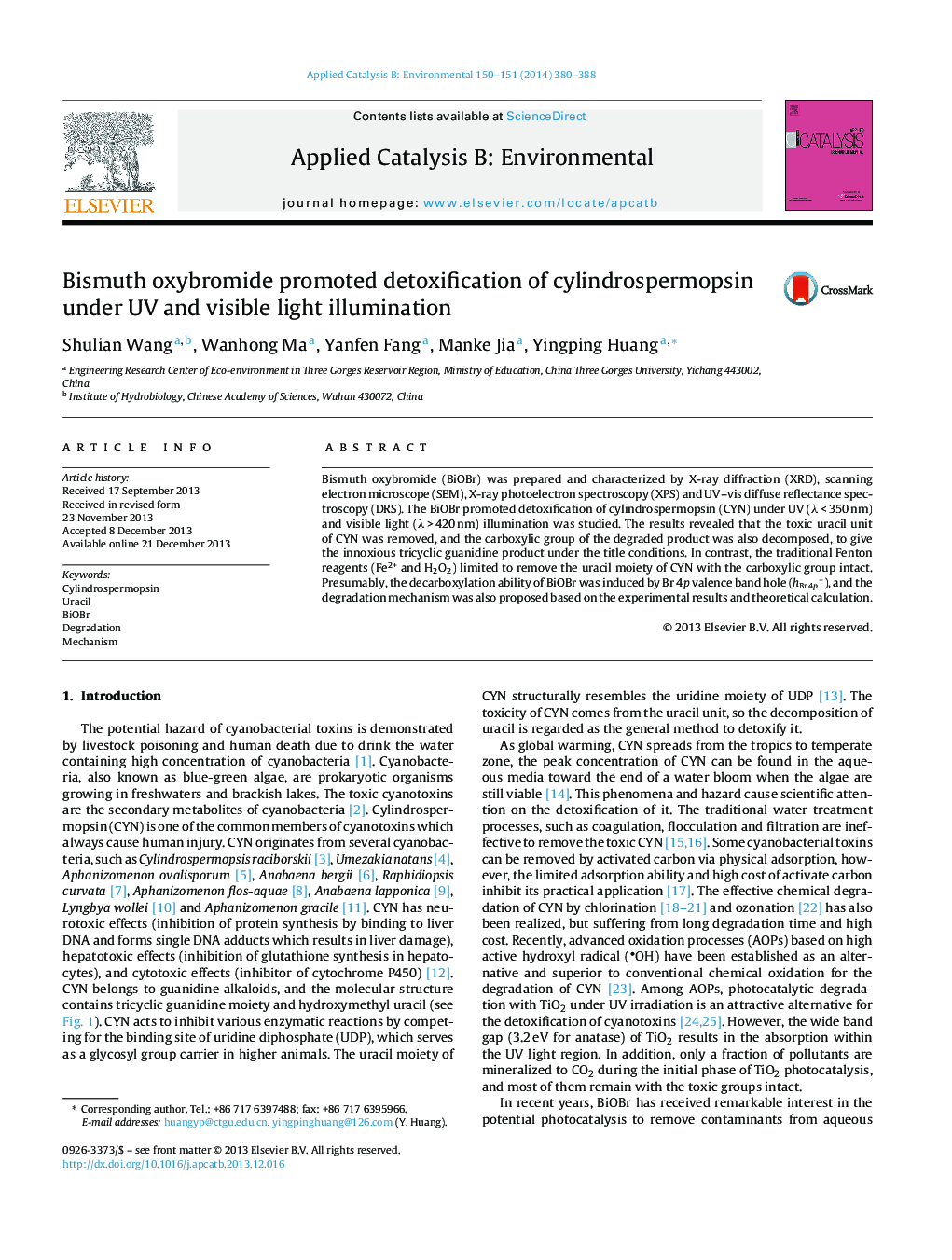| کد مقاله | کد نشریه | سال انتشار | مقاله انگلیسی | نسخه تمام متن |
|---|---|---|---|---|
| 45943 | 46427 | 2014 | 9 صفحه PDF | دانلود رایگان |

• BiOBr was used to detoxify CYN in water.
• The degradation pathways of CYN and uracil by BiOBr under UV and visible light irradiation are of the same reactive mechanism.
• BiOBr detoxifies CYN through the removal of uracil moiety.
• The degradation of CYN and uracil are attributed to the oxidation by valence band hole and active species (OH and O2−) which are attributed to the reduction of O2.
Bismuth oxybromide (BiOBr) was prepared and characterized by X-ray diffraction (XRD), scanning electron microscope (SEM), X-ray photoelectron spectroscopy (XPS) and UV–vis diffuse reflectance spectroscopy (DRS). The BiOBr promoted detoxification of cylindrospermopsin (CYN) under UV (λ < 350 nm) and visible light (λ > 420 nm) illumination was studied. The results revealed that the toxic uracil unit of CYN was removed, and the carboxylic group of the degraded product was also decomposed, to give the innoxious tricyclic guanidine product under the title conditions. In contrast, the traditional Fenton reagents (Fe2+ and H2O2) limited to remove the uracil moiety of CYN with the carboxylic group intact. Presumably, the decarboxylation ability of BiOBr was induced by Br 4p valence band hole (hBr 4p+), and the degradation mechanism was also proposed based on the experimental results and theoretical calculation.
Possible mechanisms of CYN and uracil photodegradation by BiOBr in aqueous solution.Figure optionsDownload as PowerPoint slide
Journal: Applied Catalysis B: Environmental - Volumes 150–151, 5 May 2014, Pages 380–388